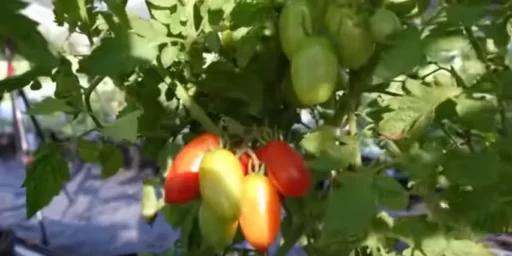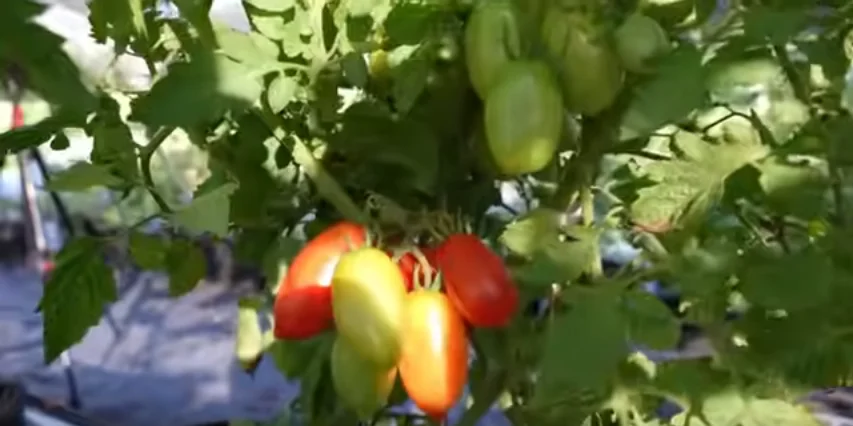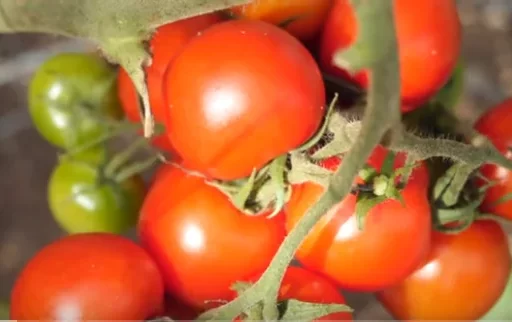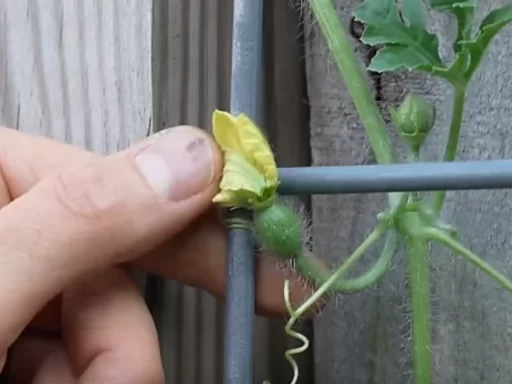As summer temperatures and humidity rise, keeping tomato plants healthy can become a significant challenge, especially in regions like the Southeastern coast of North Carolina. High temperatures combined with humidity can quickly lead to diseases and other issues that may compromise the growth and productivity of your tomato plants. However, by following a few essential steps, you can ensure your plants remain healthy and productive throughout the season.
In this article, we’ll cover four essential tips that you can implement right now to help your tomato plants thrive during hot and humid weather.
Tomato Tip #1: Pruning for Disease Prevention
One of the most important things you can do to keep your tomato plants healthy is to remove the lowest leaves, especially those below the first flower cluster. These leaves are prone to catching diseases because they are closest to the soil, which can harbor pathogens. When rain or irrigation water splashes from the ground onto the leaves, these pathogens can spread, causing diseases that slowly work their way up the plant.
Leaves that touch the ground are at the highest risk, so it’s crucial to prune them as soon as you notice any signs of disease. By removing these leaves, you prevent the pathogens from spreading and damaging the entire plant.
However, while pruning is essential, it’s important not to remove too many leaves. Over-pruning can expose your tomato fruits to sunscald, which occurs when the fruits are directly exposed to intense sunlight. To strike a balance, remove only the necessary lower leaves, allowing for proper airflow while still protecting the fruits.
Pruning is safe for all tomato varieties, whether you are growing indeterminate, determinate, semi-determinate, or dwarf tomatoes. However, how much you prune will depend on the specific type of tomato. For indeterminate varieties, you can remove some of the suckers that grow between the main stem and branches. These suckers produce flowers and fruits, but pruning them can help control the size of the plant. In contrast, with determinate and dwarf tomatoes, it’s best not to remove suckers, as this can reduce the number of flowers and fruits.
Tomato Tip #2: Hand Pollination for Better Fruit Set
Tomato flowers rely on pollination to produce fruits, and while natural pollination usually occurs via wind, it can sometimes be unreliable, especially during periods of calm weather or extreme heat. To ensure proper pollination, you can use an electric toothbrush to hand-pollinate your tomato flowers.
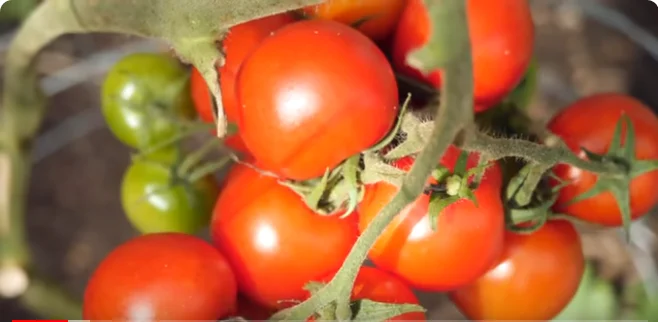
Tomato flowers contain both male and female parts, and by vibrating the flowers with an electric toothbrush, you help transfer pollen from the male to the female parts. This technique mimics the natural vibrations caused by the wind but with more precision, leading to nearly 100% successful pollination.
Hand pollination is particularly important as temperatures rise. When temperatures exceed 90°F during the day or 70°F at night, and humidity increases, tomato pollen can become clumpy and less effective. Using an electric toothbrush to vibrate the flowers before the extreme heat sets in ensures that your plants produce the maximum number of fruits.
To hand-pollinate, simply turn on your toothbrush and gently touch the back of the flower, causing a slight vibration. You might see a burst of pollen, indicating successful pollination.
Tomato Tip #3: Protecting Tomatoes from Pests
As summer progresses, pests like stink bugs, leaf-footed bugs, and worms become a significant threat to tomato plants. These pests can cause severe damage to your fruits, leaving them with holes and other blemishes. To protect your tomatoes from insect damage, you can use insect netting or organza bags.
Insect netting is a simple and effective way to cover your tomato plants, preventing pests from reaching the fruits. This method is easy to implement and works well for plants of various sizes. However, as your tomato plants grow taller, you may need additional measures to protect the fruits at the top of the plant.
For larger tomato plants, organza bags are an excellent solution. These small, inexpensive bags can be placed over individual fruits, creating a barrier that pests cannot penetrate. They are durable, reusable, and provide an easy way to protect your harvest.
Tomato Tip #4: Fertilizing for Maximum Growth
Tomato plants require consistent feeding to stay healthy and productive, especially as they begin to flower and set fruits. If you haven’t fertilized your tomatoes since transplanting them, now is the time to give them a boost.
A balanced organic fertilizer with an NPK ratio of around 5-5-5 works well for tomatoes. You can apply 1-1.5 tablespoons of fertilizer around the base of each plant, followed by half a tablespoon of bone meal for additional phosphorus. After applying the fertilizer, gently scratch it into the top inch of soil and water the plants to activate the nutrients.
In addition to granular fertilizers, you can also use water-soluble fertilizers to give your plants an extra push. A combination of organic fertilizers like Alaska Fish Emulsion and an all-purpose fertilizer like J.R. Peters 20-20-20 can provide the necessary nutrients for vigorous growth. Apply these fertilizers every two weeks for the best results.
By following these four tips—pruning, hand pollination, pest protection, and fertilizing—you’ll maximize the health and productivity of your tomato plants, even in hot and humid conditions.
Frequently Asked Questions
1. Why should I prune the lower leaves of tomato plants?
Pruning the lower leaves helps prevent the spread of soil-borne diseases. Leaves near the ground are more likely to come into contact with soil pathogens, which can cause diseases that spread upward through the plant.
2. How does hand pollination improve fruit set in tomatoes?
Hand pollination with an electric toothbrush ensures that the pollen is properly transferred between the male and female parts of the flower. This is especially helpful during calm weather or when extreme heat makes natural pollination less effective.
3. Can I remove all the leaves around my tomato fruits?
No, removing too many leaves can expose the fruits to sunscald. It’s important to leave enough leaves to protect the fruits while still allowing for good airflow.
4. How do organza bags protect tomatoes from pests?
Organza bags are small, mesh bags that can be placed over individual fruits. They create a barrier that prevents pests from damaging the fruits while allowing air and light to reach them.
5. What kind of fertilizer should I use for my tomato plants?
A balanced organic fertilizer with an NPK ratio of 5-5-5 is ideal for tomatoes. You can also use water-soluble fertilizers like fish emulsion for an additional nutrient boost.
6. When should I start hand-pollinating my tomato plants?
It’s best to start hand-pollinating as soon as the tomato flowers appear, especially before extreme heat sets in. This ensures that the flowers are pollinated before the pollen becomes clumpy due to high humidity.
7. How often should I fertilize my tomato plants?
You should fertilize your tomato plants every two weeks, especially during the flowering and fruiting stages. This provides the necessary nutrients for maximum growth and productivity.

